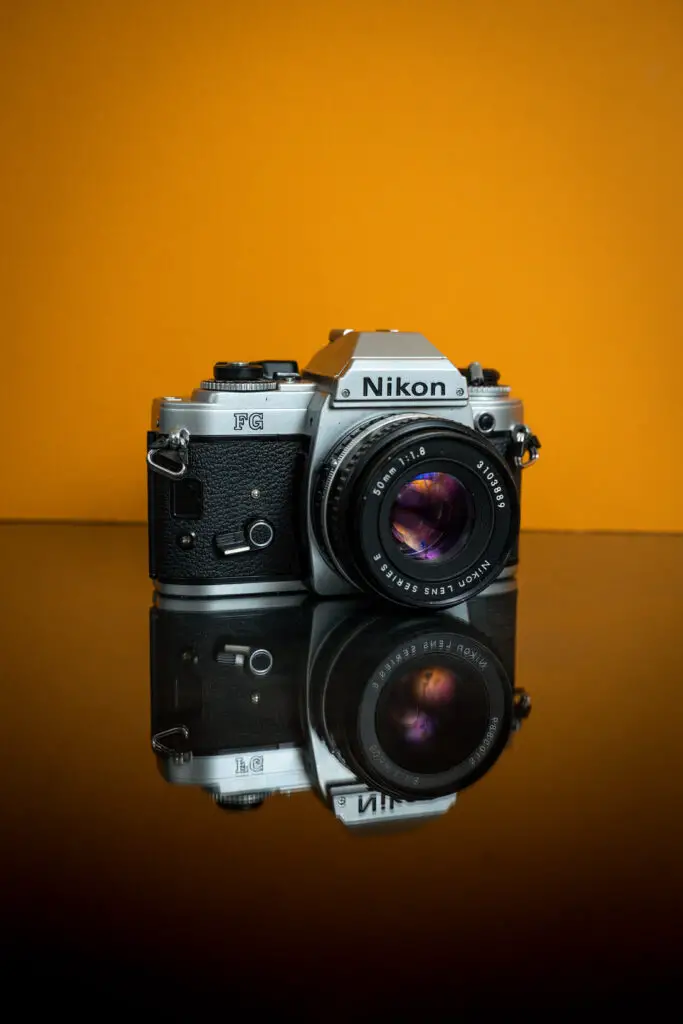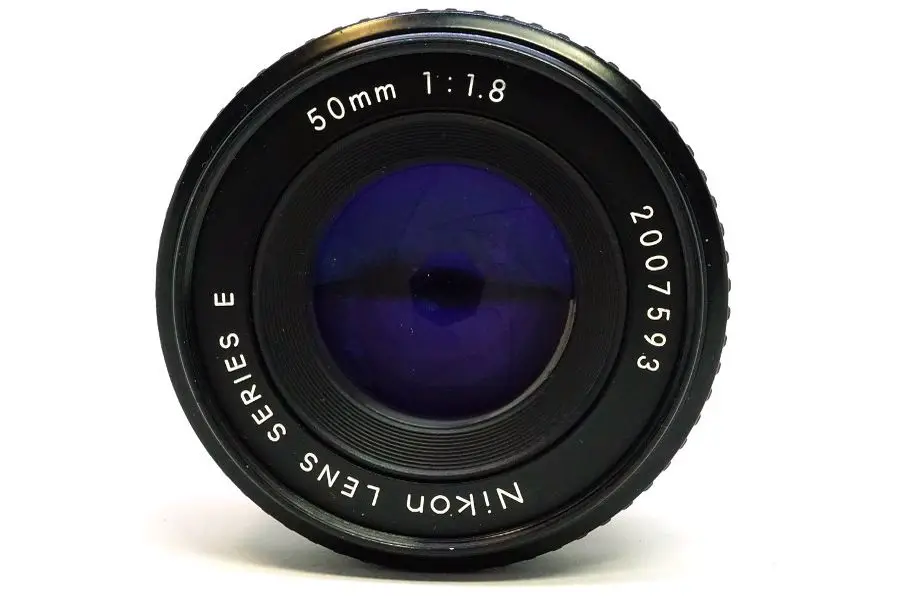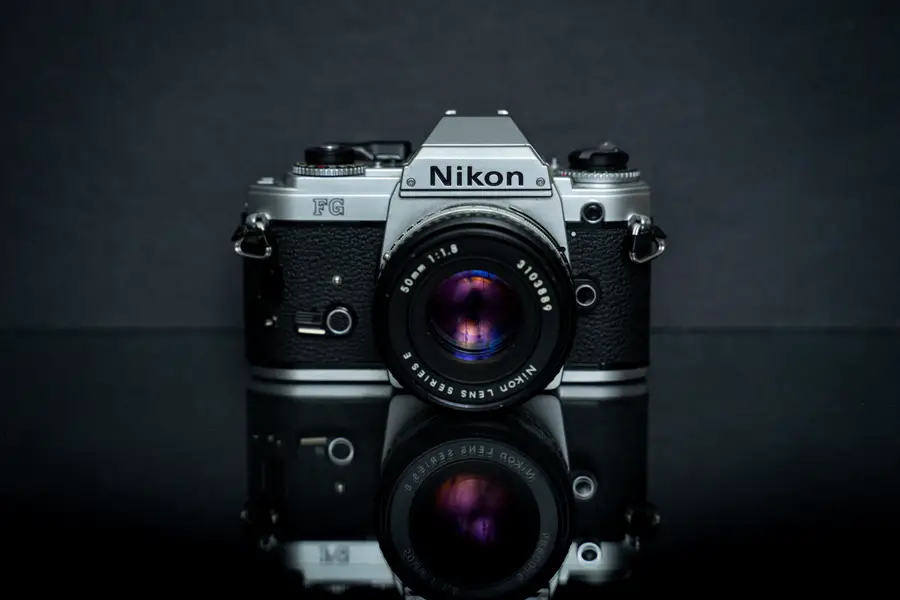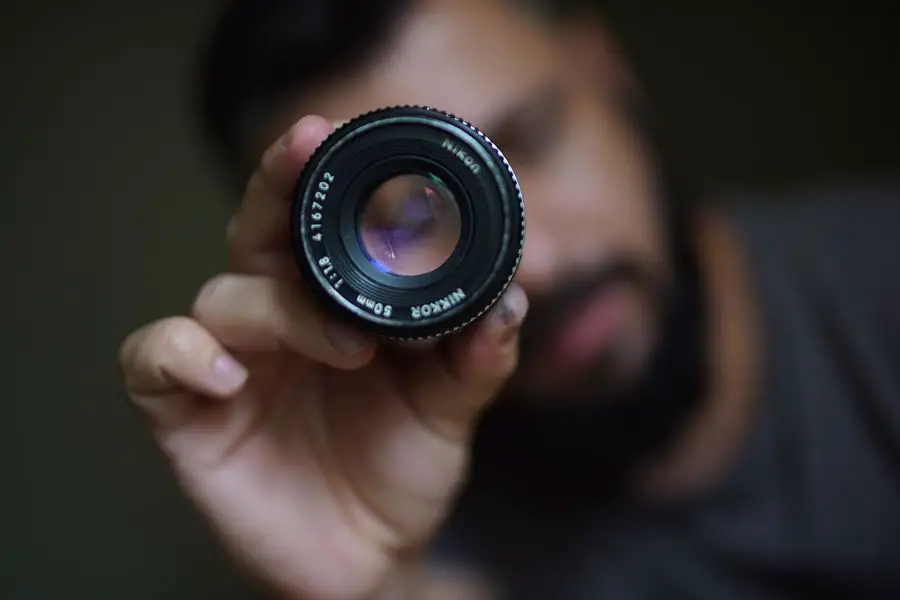As an Amazon Associate we earn from qualifying purchases.
Famously called Nifty fifty, the 50mm f/1.8 lens by Nikon has a fixed focal length and a wide aperture. To get the best out of it, you need to know how to use a 50mm f/1.8 lens Nikon.
How to Use 50mm f/1.8 Lens Nikon
With a 50mm focal length and f/1.8 aperture, this lens is one of Nikon’s best works and a must-have for our camera. It packs several features into one, giving you the flexibility to capture the most astonishing images.

It comes packed with Nikon’s Silent Wave Motor which gives you autofocusing, which is both super-fast, super silent, and extremely accurate. These lenses allow you to switch between auto and manual focus quickly and effortlessly.
Also, these lenses sport a non-spherical, curved surface. This is particularly useful in reducing distortion which is brought about by using a wider aperture. It comes coated with Nikon’s Super Integrated Coating. You can use these lenses for the following situations.
Getting the Perfect Bokeh
It is true that the wide aperture might give you an out-of-focus image, however, you can use it to your advantage too. The blurry effect sets the ground for a perfect Bokeh. A Bokeh refers to a beautiful out-of-focus background effect which is possible with a wide aperture.
To achieve this, allow some distance between the background and the subject. The further the background, the better the effects which will be created. Also, the fast lens, and manual autofocus that comes along with these lenses, will complement the whole process.
This 50mm f/1.8 lens would also allow you to use depth of field in portraiture. Here, you will focus on the details of a person’s face, while blurring everything else out. You will have to make sure that you focus on the right areas while blurring the rest.
Zooming In
A fixed focal length restricts your ability to zoom in or out, that is change the field of view. That does not mean, you cannot do anything about it. A simple solution is to use your feet!
Manually walking to zoom in and out would be a task but would help you learn the compositions and experiment in various angles. All of this would bring out the creativity within you.
Using ND Filters
Yes, a wide aperture such as f/1.8 has its disadvantages. However, they can be minimized by using an ND filter. An ND filter helps control the light that enters into a camera. It can thus be used to create various situations and effects, desirable for capturing images.
ND filters make a great complement to wider apertures. It allows you to capture shallow depth of field. Also, with an ND filter, you can shoot in harsh conditions such as during midday, without worrying about the image quality!
Capturing the Milky Way
A focal length of 50mm is ideal to capture the details of the stars. It will help the core look huge against the landscape thanks to its wide angle. Also, the Super Integrated Coating offers superior color consistency, thus you can capture the colors the milky way offers.

Remember this will be a low light photography event, hence the wide aperture that this lens brings will be an ideal companion. It will capture lots of light, which will already be scarce here.
You can adjust other settings such as a slower shutter speed and ISO levels between 1600 to 6400 and using a tripod and shutter cables to help capture this low light event. All of this combined will capture the aesthetic details presently and will give it a dramatic perspective.
Shooting Moving Objects
The wide aperture allows more light into the camera, making it ideal for low-light situations. That is not all though, with a wide aperture, you can make adjustments in other settings, using fast shutter speeds for instance.
The faster shutter speed below 1/200 seconds would not only reduce blur but make it easy to shoot photos when you are holding the camera. That is, it would remove the need to bring in a tripod to control motion blur.
In addition, the fast shutter speed would be great at capturing moving objects. Not just that, the manual focus that comes with these lenses will just complement the fast shutter speed. Hence, increasing the range of subjects you can photograph!
Shooting Street Photography
The 50mm f/1.8 lens is one of the best lenses for street photography. Not only does it allow you to back up, but this lens also allows you to focus on your subject and their expressions. The best part is that you do not have to get close, which makes it perfect for street photography.
Its silent wave motor allows you to focus while capturing a wide field of vision. Also, the superior integrated coating offers superior color consistency. This means you can shoot the true colors of a street.
Besides this the wide aperture of f/1.8 allows you to do this during the night too by allowing more light into the camera. With a wide aperture, you can create a shallow depth of field effect, which would look dramatic in a hustling and bustling city.
Shooting Portraits
The 50mm lens captures pictures like the human eye sees, that is, the picture will be more natural. This makes it a suitable tool to take portrait pictures. These lenses have a field of view which prevents lens distortion, and you can capture high-quality images.
The lenses help you focus on the person’s features thanks to Nikon’s silent wave motor. You can also achieve this by moving closer to the subject. It will allow you to capture detailed portraits.
You can blur the background to create an amazing Bokeh effect. Make sure to choose the right time of the day to shoot portraits. The mid-day can be harsh because of the glaring sunlight. Optimal timings include right after sunset or the Golden Hour.

Using Reversed Macro
It is true and a bit sad that a macro lens is expensive. The 50mm f/1.8 lens is not a macro lens, as in, it cannot capture close-up images for their details. However, you will be happy to know that it can be used as one!
With a small trick known as a reverse macro, your lens can be used as a macro lens. Here, you reverse, or turn your lens around and attach it to your camera with a dedicated adapter. You can do this in two ways.
Single Lens
Like the name sounds, here you attach a single reversed lens to your camera. Firstly, get hold of a reverse ring. Attach this ring to your lens on one end, and on the lens mount on the other.
One disadvantage that you will face is that you have a fixed aperture, so that might limit you. Still, it will allow you to take close-up images of products, ornaments, and whatnot!
Twin Lens
Here, you mount another lens on top of a normal one. For this, you will need a coupler ring and attach it the way you attached the reverse ring.
With this technique, you can capture very detailed images. For the best results, it is recommended to use a tripod.
Shooting Low Light Photography
The wide aperture of these lenses allows more light to enter the camera. This makes these lenses a great choice for low-light situations. It gives you a wide range and you can capture everything in low light including nightlife photography, capturing indoors, and in shades.
The wide aperture of f/1.8 can be complemented by other settings to achieve the best results. You do not particularly need a very slow shutter speed and can 1/200 seconds shutter speed. Also, you can make do with low ISO levels of around 500 to capture high-quality images.
Do remember to keep the subject in focus which might be difficult due to the wider aperture.
Traveling
Being a lens with a fixed focal length, these lenses do not use a lot of glass. This not only makes them cost less but also light and therefore portable. When you are planning on traveling and want to pack as little as possible then this camera is the way to go!
Although the 50mm focal length can not capture a wide field of view like a lens with a wider field of view like 35mm, it is still used by many photographers who like this angle. You can use manual focus to make sure the whole scene is focused.
You can capture a scene as perceived by your own eyes. The Aspherical Lens Element will help eliminate other types of aberrations. Also, the super integrated coating will offer superior colors making sure that the captured images are great.

Focus Stacking
Due to a wide aperture, the depth of field might get so out of focus that it may blur out the important parts of an image. The ability to switch to a manual focus that comes with the 50mm f/1.8 lenses allows you to use a concept known as focus stacking.
Here, images are captured with different focus points. Through manual focus, you focus on different areas and capture many images. Afterward, you can combine these in Photoshop and get a focused final result.
This concept is very useful when trying to capture landscape and macro. Yes, you can use these lenses as macro lenses through focus stacking too.
Getting That Candid
One of the best things about this lens is its silent wave motor technology. This allows you to capture candid moments of your loved ones. The 50mm focal length gives you a good angle, not too wide or narrow, and it makes a great choice for candid pictures.
In fact, this lens provides a field of view similar to a human’s. This means you do not need a viewfinder to shoot which makes the process much faster. Hence, you can capture the best moments quickly, without being noticed.
Wedding Bells
Wedding photography has to cover a lot. The details of the bride’s ornaments, the family group pictures, and the individual portraits, all need to be captured. Using the 50mm f/1.8 lenses at weddings can be a great idea.
The 50mm lens allows you to capture portraits because it gives you a shallow depth of field. This makes it easy to focus on the person while blurring out the background. Also, these lenses are fast, and you can capture quick images and move on.
Moreover, this lens would capture the details during closeups because of the Silent wave motor. The wide aperture would help if the wedding is held indoors because it allows more light to enter the camera.
Practicing!
The 50mm lens is an excellent lens for photographers who are just starting out. It is portable and versatile, and it allows you to capture various types of images like mentioned above.
However, to get the best out of it, you have to keep practicing. This may include taking pictures on the street, indoors, or wherever you might find inspiration.
Related Questions
What Are the Advantages of 50mm f/1.8 Lens Nikon?
Besides all these uses, if you are still unsure on whether to purchase this lens, you go for it because of the following reasons:

- With a fixed focal length, these lenses are very fast. This coupled with a fast shutter speed allows you to capture very smooth and clear images. It thus prevents motion blur.
- It is a great tool in low light situations thanks to the wide aperture it offers which allows more light to enter the camera. It also allows you to capture images at faster shutter speeds of around 1/200 seconds and ISO levels below 500 so your image quality remains high.
- They offer a lot of learning. Although they come packed with a lot of advantages, their shortcomings mean the photographer has to come up with creative solutions to solve them. This offers a lot of learning and creativity!
- This lens offers a shallow depth of field owing to its wide aperture and with that you can capture beautiful Bokeh effects. It also allows you to capture portraits with the person highlighted and the backgrounds blurred out.
- This lens prevents lens distortion. This is normally an issue with wide angle lenses where the outer edges of an image might appear distorted. This is not an issue with 50mm lens and thus is preferred for portraits.
- The 50mm f/1.8 lens by Nikon produced high-quality images compared to other lenses in the same range. You can get a lot out of it if you know how to use a 50mm f/1.8 lens Nikon.
- This lens is very light in weight. You can carry it around all day without feeling tired. Also, it is compact and it allows you to take it traveling with you without worrying about the luggage.
What Are the Disadvantages of 50mm f/1.8 Lens Nikon?
- It comes with a fixed focal length which means that you are not able to zoom in and out of pictures. You have to move around a lot to get the right image.
- This lens is not recommended for capturing images that involve a wide field of view because it provides a limited vision. Hence you would need a lens with a lower focal length to shoot architecture or group photos for example.
- This lens is not the go-to for macro photography. Its field of view is wider and can not capture details like a particular macro lens.
What Are Some Other Alternatives?
Although the 50mm f/1.8 lens by canon is a very versatile lens which can be used in a number of situations, there are lots of other lenses which can help capture in very specific situations. These include zoom lenses, macro lenses, and a lot more.
100mm Macro Lens
The 100mm macro lens is another lens with a fixed focal length which allows you to capture highly detailed images. It comes with a wide aperture of around f/1.4 and can be used to capture Bokeh effects and in low-light situations.
Its narrow field of view is a great way to capture product, food, and fashion photography. It is made to get close-up details of the subject it is capturing. However, this lens is very heavy because of its finish and is thus tiresome to carry around.
Also, this lens is very expensive compared to the 50mm lens and is only bought by photographers who specialize in product photography.
55-250mm Lens
This is a powerful telephoto lens and is a go to for wildlife, travel and sports photography. It has a narrow aperture range which is usually between f/4 to f/5.6, it thus captures clear and detailed images.
The flexible focal length allows you to zoom in and out of scenes. This makes it easy for you to capture images from afar without being a part of it. It is helpful in situations such as capturing players in a stadium or an animal far away in the jungle.
This lens is also very expensive and heavy to carry around. It is thus only bought by photographers who specialize in particular types of photography.
Conclusion
It is spectacular how much you can get out of a single lens. This lens can be used for everything from street photography to portraits and even weddings! You can get all that for a very low price!
